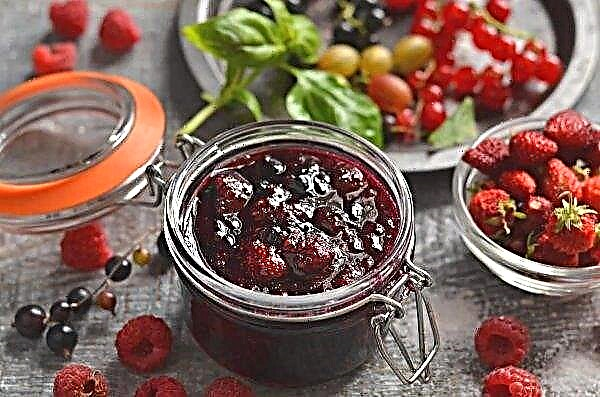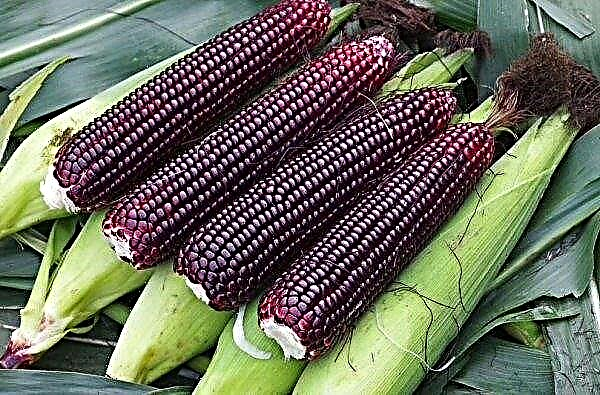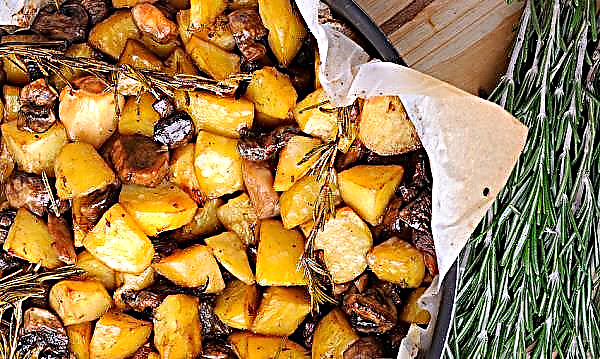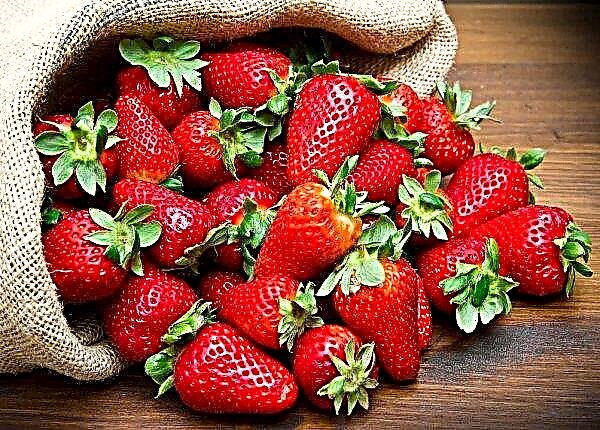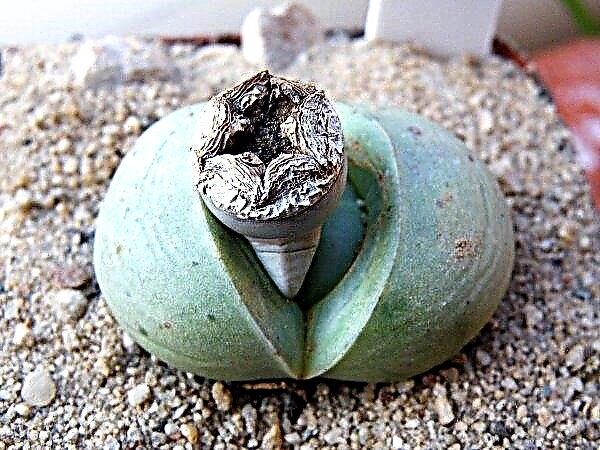The Kishmish grape variety is famous for its sweet, delicate taste and lack of seeds. Despite the small size of the berries and a small amount of juice in them, this grape is successfully used at home for making delicious pastries or preserves, and for the production of homemade wine. Subject to the conditions of collection and manufacturing technology, from the Kishmish grapes you can make homemade wines - dry, semi-sweet or dessert.
Selection and pre-preparation of ingredients
Before you start preparing homemade wines, you should prepare the raw materials.
To do this, follow these steps:
- pick grapes;
- clean it from small twigs, any debris;
- prepare a wort (there are names - mash or sourdough). This is a mixture of water, crushed berries and sugar that have undergone a fermentation process.
Step-by-step recipe for preparing wine starter culture (wort) from Kishmish:
For procurement you will need:
- Kishmish grapes - 200 g;
- water - 400 ml;
- sugar - 20 g.

Sourdough preparation:
- thoroughly wash the glass container (you can take an ordinary liter jar, but it is better to bottle with a wide neck - so the fermentation process will start faster);
- carefully prepared grape berries in a bottle;
- pour granulated sugar over the berries;
- gently pour the entire volume of water (water temperature about + 25 ° C);
- cork the neck of the bottle with a piece of cotton wool and place in a warm, shaded place (if the bottle is on the street) for 3 days. Air temperature should be kept in the range from + 18 ° С to + 28 ° С;
- after the fermentation process “starts” and takes three days, it is allowed to store the starter culture in the refrigerator (but not longer than 10 days).
Important! Do not use cheap raisins “from packages” to create wine starter culture. The lower the price of raw materials, the higher the likelihood that yeast bacteria simply will not survive on the surface of such berries, because inexpensive raisins are processed with chemicals to keep them longer. It is recommended to use fresh berries or high-quality raisins from Kishmish.
Homemade wine recipes from Kishmish grapes
If the starter is ready, you can begin to prepare containers and ingredients for wine. There are many recipes for homemade wine from Kishmish, but pay attention to those that are easy to make at home.
Classic recipe
Three types of wine are prepared according to classic recipes: dry, semi-sweet and dessert. They differ both in berry processing technology and in the amount of added sugar.
Dry wine

15 l 14-30 days
Energy value per 100 g:
- Grind the raisins in any way, put in a saucepan, and fill with sugar.
- Stir and leave to ferment.
- When the process starts, stir the berries that rise above the juice so that air enters the juice and fermentation proceeds even faster (you need to stir daily, at least once a day).
- Within 14 days, the container with raw materials should be at a temperature of + 25 ° C.
- After the set time, the wort is filtered through a sieve or gauze.
- The liquid must be drained into a clean glass container prepared previously (20 l bottle).
- A sterile rubber glove is put on the neck of the bottle; one puncture is required in it (the glove will act as a water seal).
- The liquid is left to ferment in warmth (from + 25 ° С) for 14–30 days until fermentation stops.
- The finished product is filtered, poured into a dark container and stored in the cold.

Important! If the wine tastes too sour, you don’t need to add regular sugar! This will not improve the taste of the drink. Choose ripe Kishmish grapes and follow the recipe sequentially, then the resulting product will surely delight you with high taste.
Dessert wine

15 l 30 days
Energy value per 100 g:
- Mash the berries in a tub or pan with your hands, a wooden pestle, cover the dishes with gauze, tie them around the edges so that insects do not get inside (ideal if the raw material is infused at a temperature of + 25 ° C).
- Wait until the grapes start to juice (to understand that the fermentation process has begun, you can, by the characteristic hissing sound from the pan, a sour smell will appear).
- After 3 days, drain the juice, pouring it into a clean bowl, filling it 3/4.
- Add sugar, stir until dissolved.
- Put a glove on the neck of the bottle, pierce it in one place, and wrap it tightly to the neck.
- Leave to wander at a temperature not lower than + 25 ° C for 30 days.
- After completing the fermentation process, carefully pour the drink into a bucket or pan so that no sediment gets into it.

Did you know? Wine from white grape varieties is cooled before serving to + 8 ° C. Red, on the contrary, should have a temperature from + 10 ° С to + 14 ° С. For domestic wines, this recommendation is rarely applied. The best temperature for storing wine in bottles (in the cellar) is up to + 18 ° С.
Semi-sweet wine

15 l 30 days
Energy value per 100 g:
- Mash the grapes until the juice starts up (use a wooden pestle and wooden or enameled dishes).
- Close the container with raw berry gauze, keep warm for 2 weeks.
- Stir every day, lowering the “hat” of fermented berries so that air gets inside.
- When 2 weeks pass, drain the juice from the berries, squeeze the cake.
- Pour juice into a glass bottle.
- Add sugar, stir gently.
- Put a glove on the neck of the bottle, pierce it with a needle, and fix it tightly on the bottle.
- Leave until fermentation is over (for 30 days).
- Strain gently so that the precipitate does not get into the wine.
- Store in a cellar or basement.

Semisweet wine differs from dessert only in the amount of added sugar. The dessert is sweeter, semi-sweet, respectively, has a more pronounced acid in taste and even some astringency.
Important! The precipitate in the finished wine degrades the taste of the drink. To get a really good wine, use a simple way to drain: through a rubber tube directly into storage bottles.
With raspberries or currants

30 days
Energy value per 100 g:
- Mash grapes, raspberries and currants until juice.
- Close the dishes with gauze, leave for 2 weeks to ferment.
- Pour the juice into a bottle and squeeze the pulp.
- Add sugar to the juice, mix well, put a rubber glove on the bottle and fix it so that it does not fly off the exhaust air, pierce the rubber for air to escape.
- Leave for 30 days until the fermentation process is completed, when ready - drain carefully, avoiding sediment in the finished wine.

In addition to classic recipes, winemakers love to make intoxicated drinks with the addition of “additional” fruit or berry raw materials, for example, with currants, raspberries. Berries give a beautiful color, aroma, enrich the finished product with a pronounced taste, allow you to experiment with the saturation of the drink itself, its color. When adding red berry juice, the wine is already considered red, not white.
Did you know? OfMany winemakers advise against washing homemade Kishmish before processing it into wine. On the surface of the berries are useful “fermentation” bacteria. But grapes bought at the store can and should be washed, because in large commercial vineyards the berries are treated with chemicals and the bacteria necessary for the starter culture do not multiply well on the surface of such fruits.
Using water

30 days
Energy value per 100 g:
- Knead the grapes, fill with water and leave for fermentation (the top of the pan is tied with gauze so that air gets to the mass of berries, the raw materials are stirred daily);
- After 14 days, acidic juice is poured into a glass dish.
- Sugar is added, mixed thoroughly until completely dissolved.
- Leave for another 30 days, putting on the neck prototype of the hydraulic lock - a glove (you need to make a hole in it for air to escape).
- When ready, pour the drink into glass bottles (no precipitate).

Terms and conditions of storage
Domestic wine is stored for several years, but experienced winemakers recommend consuming it during the first year. Moreover, next year, in autumn, you can again make this useful, in moderation, drink, but from a new grape harvest. Ideally, if the finished product is stored at a temperature not exceeding + 14 ° С.
Already uncorked bottles are stored in the refrigerator, the contents of which will be served to the festive table. Using simple recipes of Kishmish grapes, each owner will prepare a delicious home-made hop-drink. An important nuance: compliance with manufacturing and storage technology. And then the resulting product will delight with excellent taste, aroma and moderate astringency.



